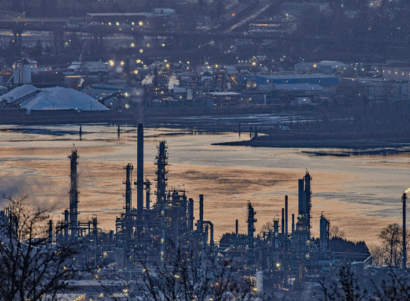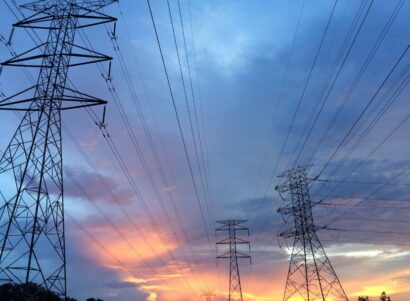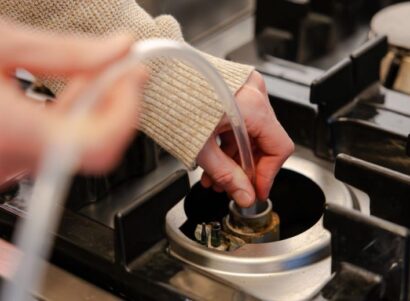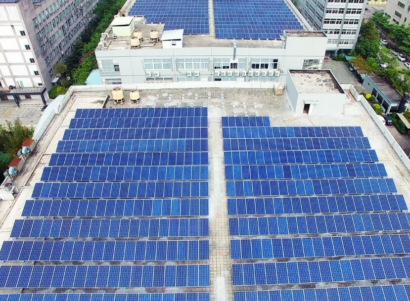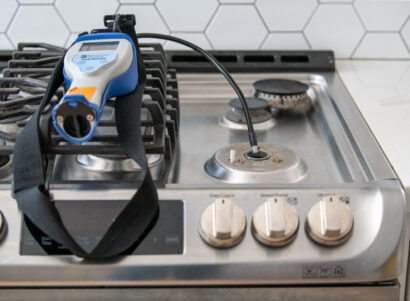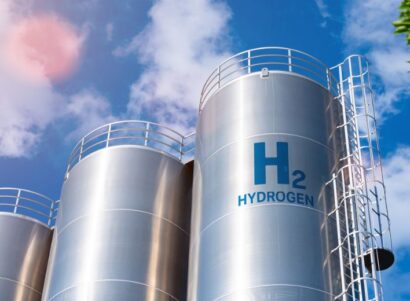What is in natural gas?
Natural gas is all around us. While remaining mostly out of sight, it flows through communities and cities around the world in a vast transmission and distribution system. Large pipelines deliver natural gas to power plants and small pipelines deliver gas directly into buildings, where it is used to fuel water heaters, furnaces, clothes dryers, kitchen stoves, and other appliances. If you live in the United States, there’s about a 50% chance you have at least one natural gas appliance in your home. But despite the ubiquity of gas, few of us stop to ask: what is this stuff made of?
Most people associate natural gas with methane, which acts both as the fuel source and a powerful greenhouse gas. Industry reporting shows that by the time natural gas is delivered to customers it contains at least 90% methane. But existing, albeit limited, research paints an incomplete picture of what other chemicals make up the remainder of natural gas.
We know that when unprocessed natural gas is pulled out of the ground it contains numerous chemicals, including health-damaging air pollutants like benzene and hydrogen sulfide. Research has also shown that other hazardous air pollutants like nitrogen oxides, formaldehyde, and carbon monoxide—all of which are known to have adverse health impacts—can be produced by combusting natural gas, including from gas used in homes. Yet, to our knowledge, no study has tested distribution-level natural gas (the gas that comes into your home and generates electricity in nearby power plants) for known health-damaging air pollutants.
To address this gap and identify the makeup of natural gas, PSE Healthy Energy is conducting a series of studies to test unburned natural gas for many compounds on the Environmental Protection Agency’s (EPA) list of Hazardous Air Pollutants.
PSE’s research: testing gas where the pipeline ends
Our research began by collecting gas samples in kitchens within Massachusetts and California but quickly expanded. Today, our data collection includes hundreds of samples taken from dozens of homes across the United States. By casting a wide net, our goal is to establish a robust body of research that provides new insights on the composition of gas at the point where the pipeline ends: in homes, offices, and buildings throughout the country and around the world.
In the vast majority of the homes we’ve visited, gas collection takes roughly fifteen minutes. Researchers from PSE attach a hose to the where gas exits the burners of kitchen stoves, allow a small amount of gas to flow into a canister, and send the sample to a nationally-certified lab for analysis.
Sometimes, however, we uncover something unexpected. On a recent visit to a home in Indianapolis, our noses were met by the unmistakable stench of rotten eggs. For the homeowner, a heavy layer of cigarette smoke had masked the smell of sulfur odorants, which utilities add to help their customers detect an otherwise odorless gas. Our specialized equipment quickly confirmed what our noses suspected: the participant’s stove was leaking gas into their home.
Because gas contains methane and methane is highly flammable, a leak of this size poses a well-known safety hazard. By testing gas for health-damaging air pollutants, we hope to better understand whether the kind of acute and prolonged exposure we witnessed in Indianapolis poses human health risks from exposures to hazardous air pollutants.
Why even small leaks matter
A leak as significant as the one we found in Indianapolis is rare, but recent research that Senior Scientist Eric Lebel led with Stanford University suggests that three-quarters of the emissions from gas stoves happen when they are off. While the vast majority of these leaks are too small to smell, lots of little leaks add up: our analysis showed that gas stoves have an annual climate impact on par with the carbon dioxide emissions from 500,000 gasoline-powered cars. Kitchen stoves are also not the only gas appliance that can leak. In another recent study, we found that, like the gas stoves, water heaters also emit unburned gas at all times. What’s more, our appliances receive gas from a vast network of pipes and equipment, which emitted the methane equivalent to the carbon dioxide emissions from over 22 billion gallons of gasoline in 2019.
From a climate perspective, it is essential to understand how much methane is leaking from gas infrastructure. From a health perspective, we also need to understand where leaks occur. Gas appliances are typically indoors where air flow is limited and in close proximity to where we live, eat, and sleep—exactly where health-damaging air pollutants can do the most harm. In some states, it is legal to have a natural gas space heater that is unvented, allowing gas and combustion emissions to remain indoors.
The limited research we do have on distribution-level gas composition makes a strong case for better ventilation of these gas appliances. Our findings that gas stoves leak while they are off, however, suggests that better ventilation may only be part of the solution. By measuring the chemical composition of unburned gas from kitchen stoves, we hope to provide policymakers and the public with the information they need to weigh the benefits of gas-powered appliances against the risks. Truly understanding this balance, however, requires that we can answer the question “What is natural gas made of?”


 Report
Report
